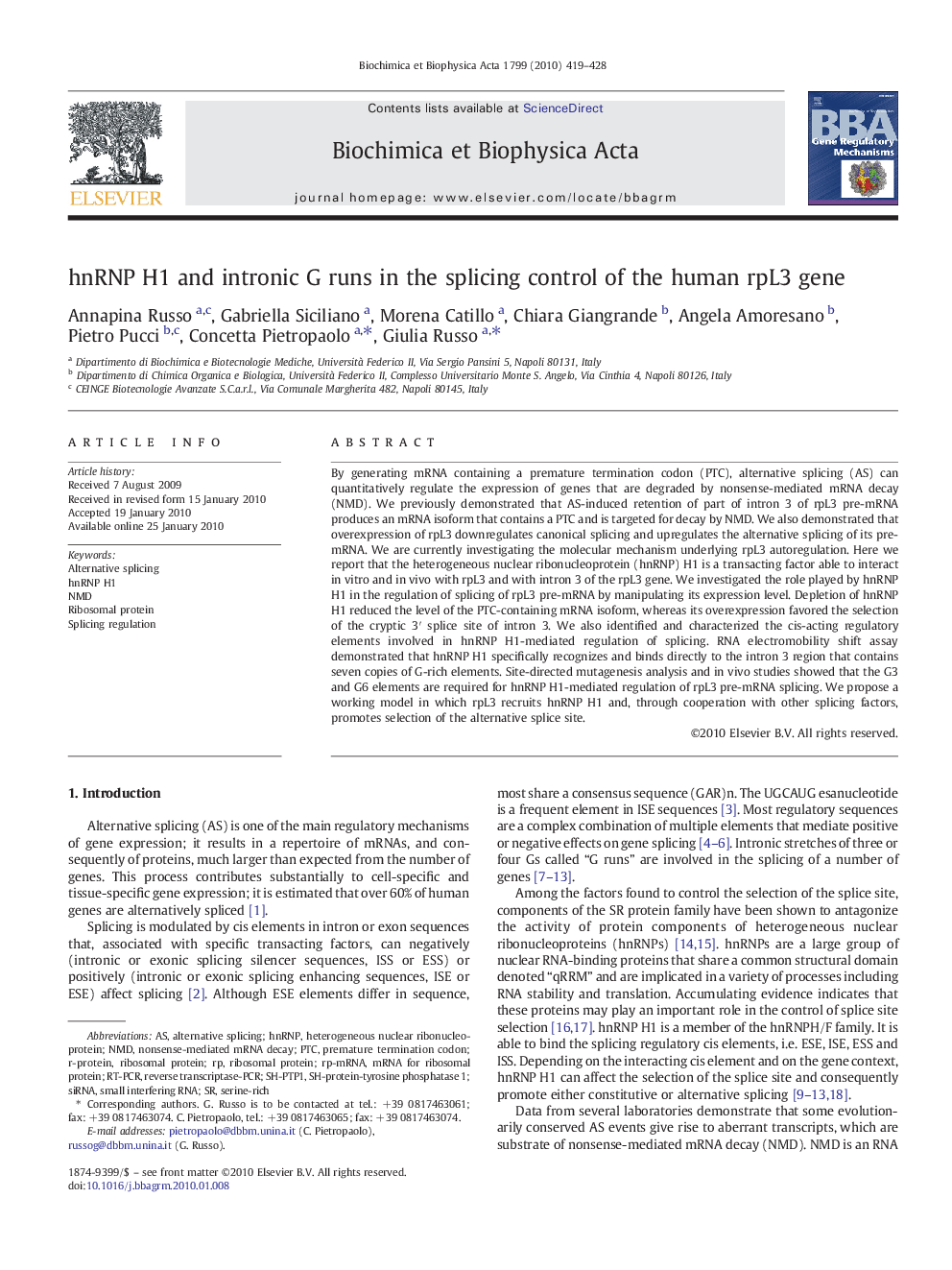| Article ID | Journal | Published Year | Pages | File Type |
|---|---|---|---|---|
| 1946832 | Biochimica et Biophysica Acta (BBA) - Gene Regulatory Mechanisms | 2010 | 10 Pages |
By generating mRNA containing a premature termination codon (PTC), alternative splicing (AS) can quantitatively regulate the expression of genes that are degraded by nonsense-mediated mRNA decay (NMD). We previously demonstrated that AS-induced retention of part of intron 3 of rpL3 pre-mRNA produces an mRNA isoform that contains a PTC and is targeted for decay by NMD. We also demonstrated that overexpression of rpL3 downregulates canonical splicing and upregulates the alternative splicing of its pre-mRNA. We are currently investigating the molecular mechanism underlying rpL3 autoregulation. Here we report that the heterogeneous nuclear ribonucleoprotein (hnRNP) H1 is a transacting factor able to interact in vitro and in vivo with rpL3 and with intron 3 of the rpL3 gene. We investigated the role played by hnRNP H1 in the regulation of splicing of rpL3 pre-mRNA by manipulating its expression level. Depletion of hnRNP H1 reduced the level of the PTC-containing mRNA isoform, whereas its overexpression favored the selection of the cryptic 3′ splice site of intron 3. We also identified and characterized the cis-acting regulatory elements involved in hnRNP H1-mediated regulation of splicing. RNA electromobility shift assay demonstrated that hnRNP H1 specifically recognizes and binds directly to the intron 3 region that contains seven copies of G-rich elements. Site-directed mutagenesis analysis and in vivo studies showed that the G3 and G6 elements are required for hnRNP H1-mediated regulation of rpL3 pre-mRNA splicing. We propose a working model in which rpL3 recruits hnRNP H1 and, through cooperation with other splicing factors, promotes selection of the alternative splice site.
